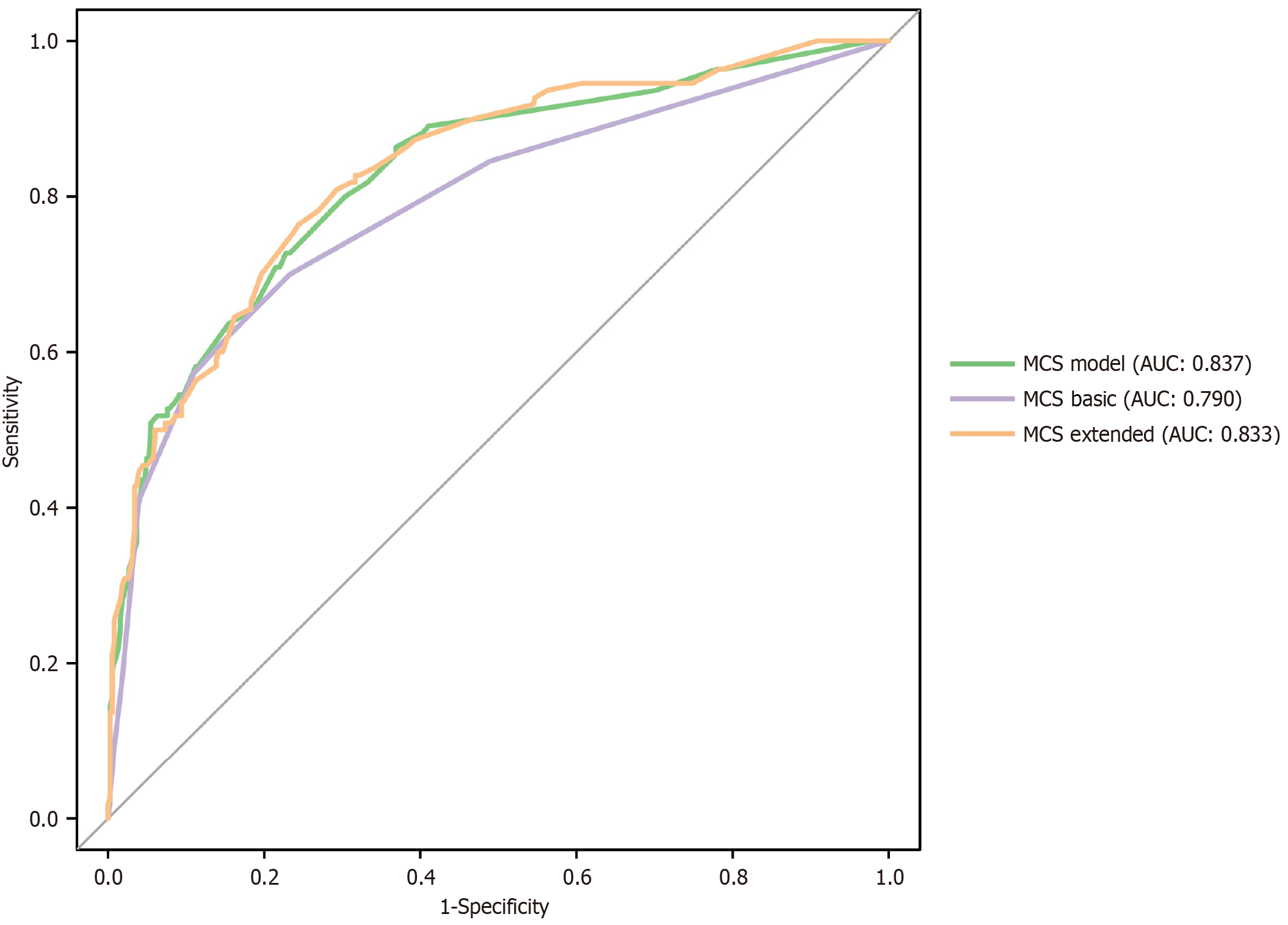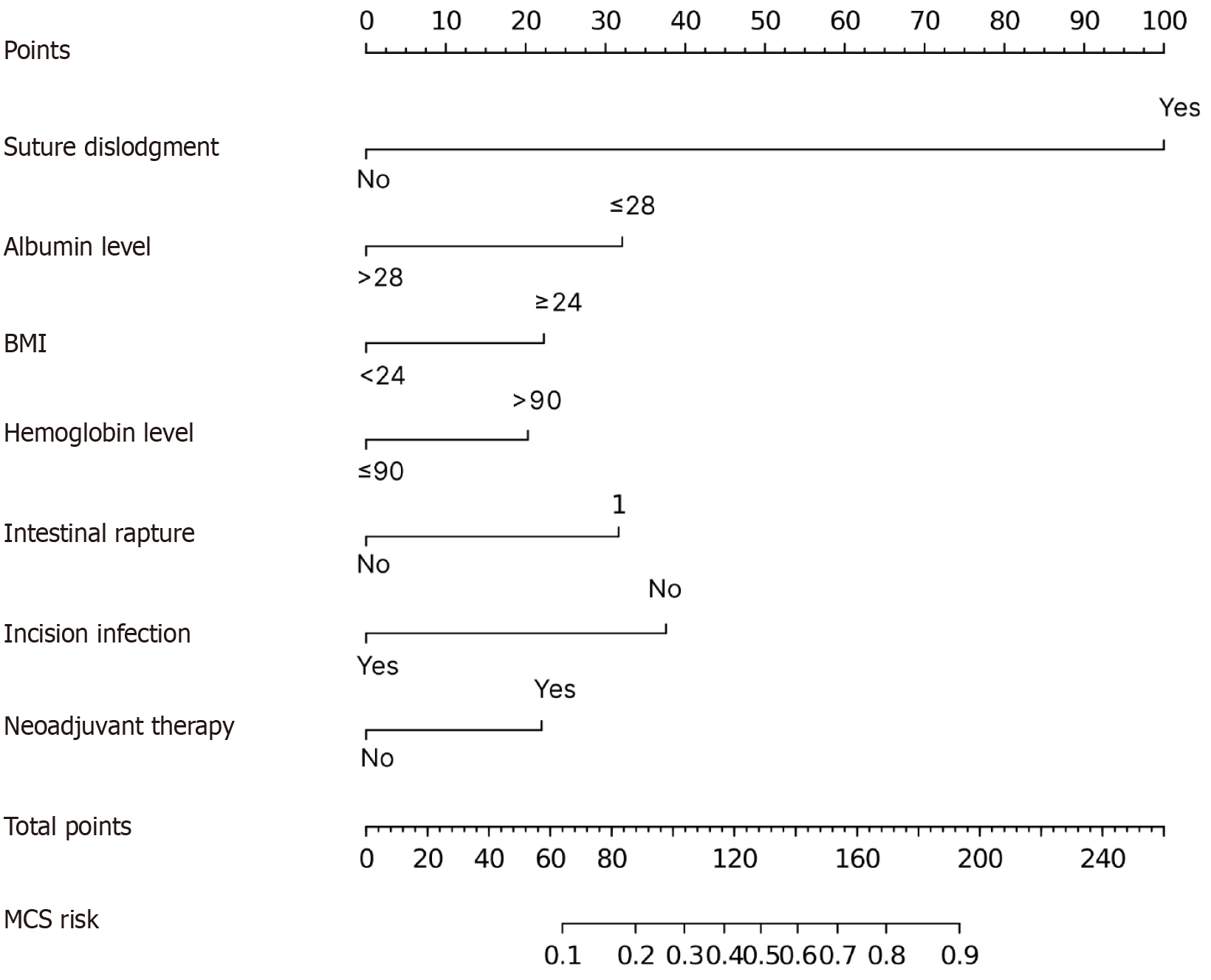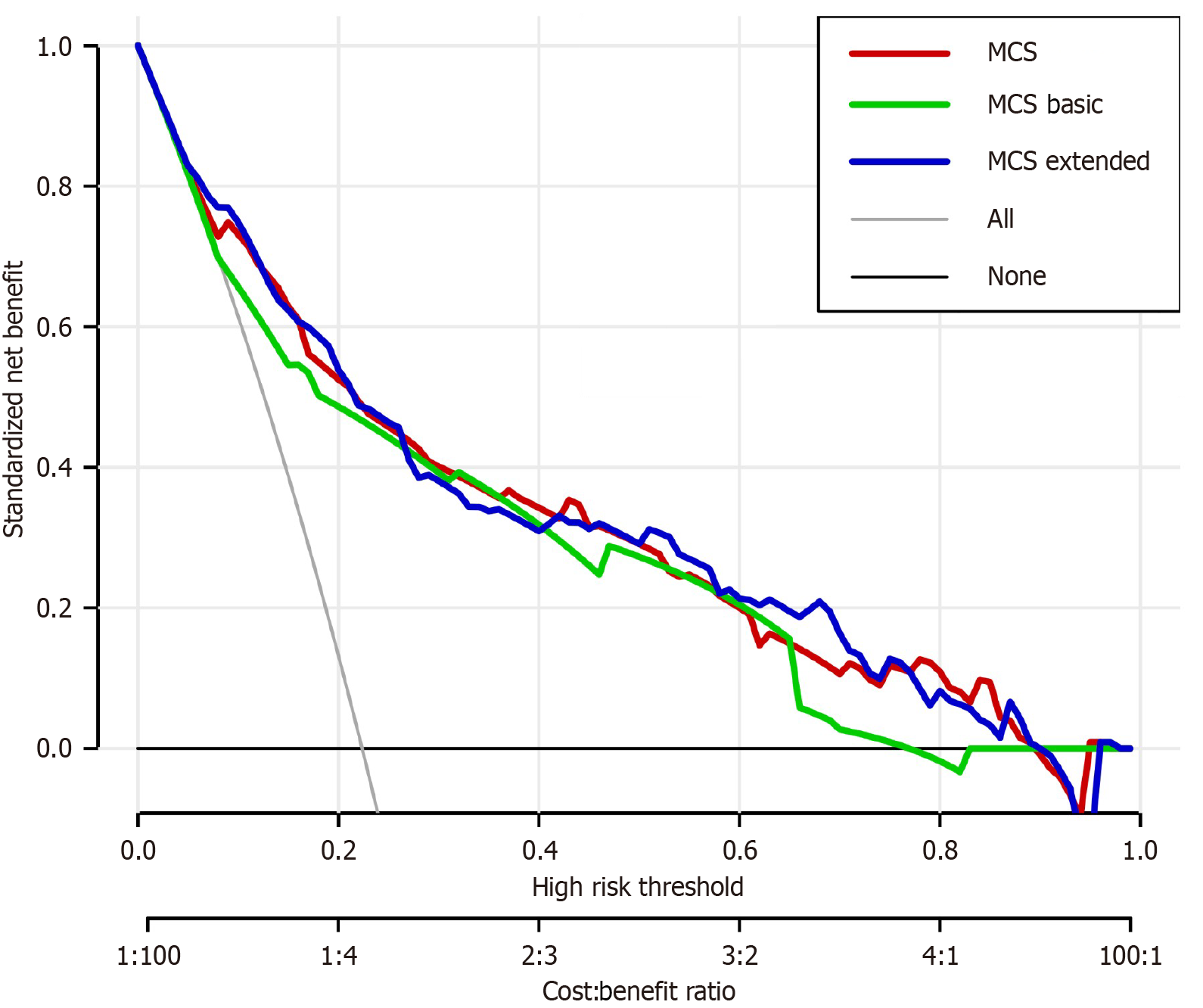Copyright
©The Author(s) 2024.
World J Clin Cases. Nov 26, 2024; 12(33): 6620-6628
Published online Nov 26, 2024. doi: 10.12998/wjcc.v12.i33.6620
Published online Nov 26, 2024. doi: 10.12998/wjcc.v12.i33.6620
Figure 1 Receiver operating characteristic analysis curves.
Mucocutaneous separation (MCS) model is the primary model incorporating all 7 independent predictive factors [suture dislodgment, albumin level, body mass index (BMI), hemoglobin level, intestinal rapture, incision infection and neoadjuvant therapy]. MCS Basic is the stripped-down model using only suture dislodgment, albumin level and BMI. MCS Extended incorporates all the potential predictive factors. MCS: Mucocutaneous separation; AUC: Area under the curve.
Figure 2 Mucocutaneous separation model nomogram.
Visualization of the mucocutaneous separation (MCS) model via a nomogram. The risk of MCS is determined based on the total points based on the seven independent predictive variables. MCS: Mucocutaneous separation.
Figure 3 Decision curve analysis.
The clinical utility of the three models is generally comparable, however, at higher risk profiles, the mucocutaneous separation model is generally better. MCS: Mucocutaneous separation.
- Citation: Liu Y, Li H, Wu JJ, Ye JH. Risk factors and risk prediction model for mucocutaneous separation in enterostomy patients: A single center experience. World J Clin Cases 2024; 12(33): 6620-6628
- URL: https://www.wjgnet.com/2307-8960/full/v12/i33/6620.htm
- DOI: https://dx.doi.org/10.12998/wjcc.v12.i33.6620











